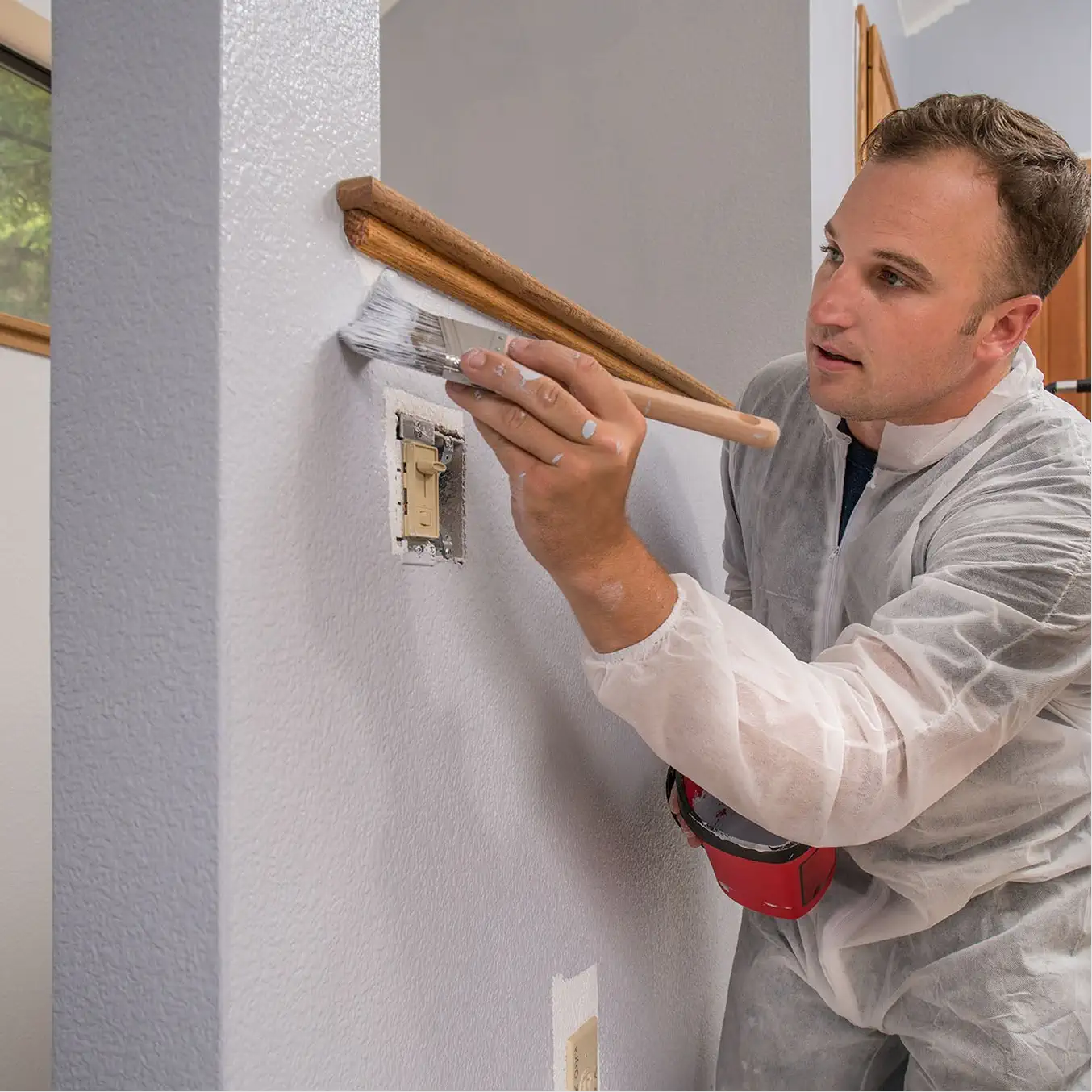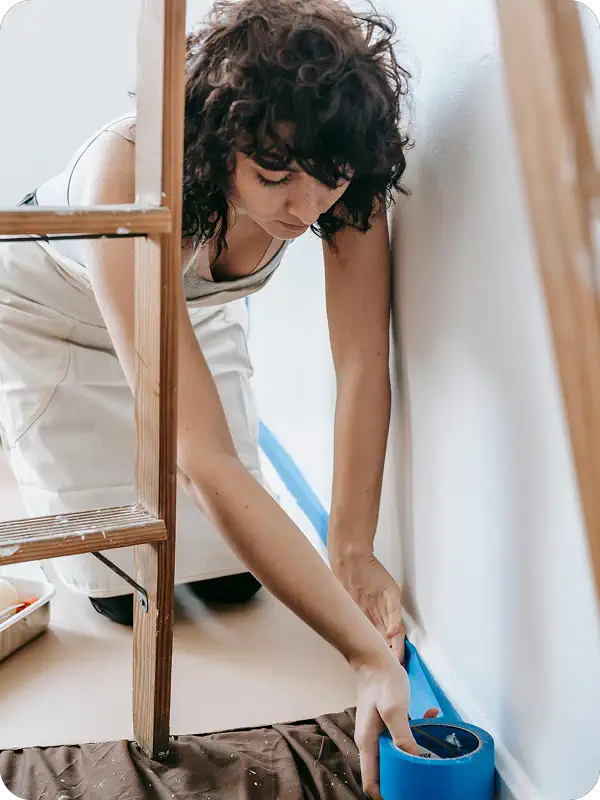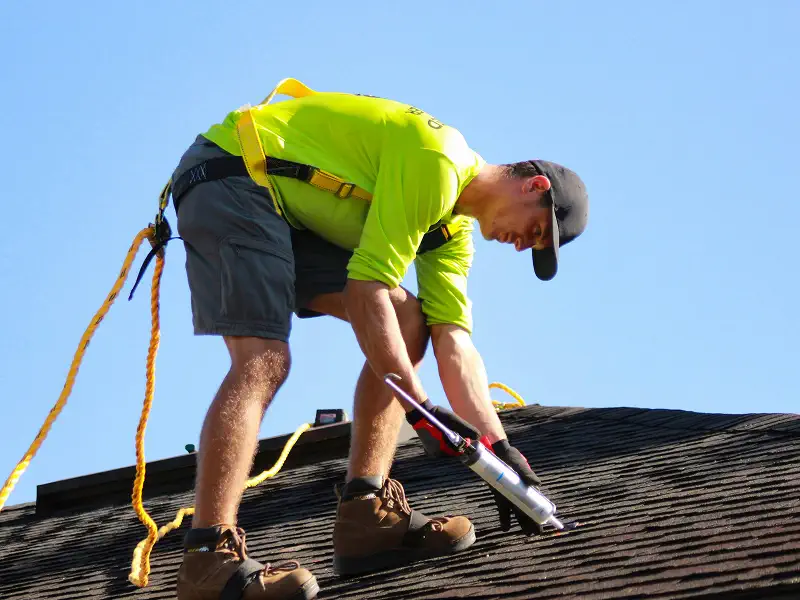





From gutters to glass, lawns to lighting -
HOWIE knows how to help.
Our family of trusted home-service brands covers almost every category of home improvement - and if we don’t have it in-house, we’ll connect you to someone we trust.
Explore our services and see how HOWIE makes hiring a pro easy, honest, and (dare we say?) enjoyable.












.svg)
.svg)








































































































Whether you’re planning a project or just trying to remember when to clean your gutters, we’ve got your back (and your inbox).












Yes! HOWIE proudly partners with Habitat for Humanity International®, contributing to the mission of building homes and hope for families in need. Every review, every project, and every connection helps us give back to the communities we serve.
We’re not a random marketplace. We’re a family — a network of trusted local experts who share values, training, and a commitment to doing what’s right for homeowners. Every brand in our family is backed by the same dedication to professionalism, reliability, and community impact.
Every HOWIE Family brand is carefully vetted and locally owned. Each partner upholds our high standards for customer satisfaction, safety, and community involvement — so you can trust that you’re working with professionals who truly care.
HOWIE brings together a full range of home improvement and maintenance services — including roofing, insulation, lawn care, fencing, painting, lighting, glass installation, blinds, and HVAC. Whatever your project, there’s a HOWIE Family brand that knows how to help.
HOWIE is your go-to home expert — a trusted hub that connects homeowners with top-rated home service professionals from our Family of Brands. From roofing to remodeling, lawns to lighting, HOWIE knows how to help you care for every corner of your home.
Think of HOWIE as your home’s personal concierge. Simply explore our services, answer a few quick questions, and we’ll connect you with the right experts in your area. Every professional in the HOWIE Family is part of a locally owned franchise, backed by national standards for quality and care.
Yes! Exploring services, requesting quotes, and connecting with your local HOWIE Family brands are all free. You only pay for the work you choose to have done — directly through the licensed, local business that completes your service.
Yes — HOWIE connects homeowners with local service providers across the U.S. As our Family of Brands continues to grow, we’re expanding into even more neighborhoods to serve homeowners everywhere.
Blinds and shades with adjustable slats or vanes, such as Venetian blinds and vertical blinds, provide excellent light control.
Blackout shades, shutters, and tightly fitted blinds offer the best privacy.
Consider the color scheme, style, and function of the room. Opt for neutral tones for versatility or bold colors and patterns to make a statement.
Yes, shades are available in both blackout (completely block out light) and light-filtering (allow some light to pass through) options.
Yes, many shades can be motorized for convenient operation. This feature is particularly useful for hard-to-reach windows.
Shutters are solid window coverings with louvers that can be adjusted. They are typically more durable and offer better insulation than blinds but are more expensive.
Yes, wooden shutters can be painted or stained to match your interior décor. Vinyl and composite shutters are usually pre-colored and cannot be painted or stained.
Yes, cellular shades (honeycomb blinds) are highly energy-efficient, providing insulation by trapping air in their cells, which helps reduce heating and cooling costs.
Dust regularly with a microfiber cloth or vacuum with a brush attachment. For deeper cleaning, wipe with a damp cloth or use a mild detergent for spot cleaning.
Blinds: Offer adjustable light control and privacy. Shades: Provide a sleek look and are available in various light-filtering options. Shutters: Add a classic touch and improve insulation. Curtains/Drapes: Enhance décor and offer a wide range of styles and fabrics.
Consider your needs for privacy, light control, insulation, and aesthetic preferences. Also, factor in the style of your home, the functionality of the room, and your budget.
Biannual inspections, clearing debris, maintaining gutters, and promptly repairing minor damages.
Steeper slopes are ideal for tiles and shingles, while low slopes are better suited for metal roofing or built-up roofs.
Most roofs can support solar panels, but the best are large, unshaded, south-facing roofs with durable materials like metal or composite.
Document the damage, contact your insurance provider, and work with an adjuster. Use a reputable contractor for assessments and repairs.
Ice dams form when snow melts and refreezes at the roof's edge, preventing proper drainage. Proper attic insulation and roof ventilation can prevent them.
It's possible with shingles, but not recommended as it can mask underlying issues and increase the roof's weight.
Flashing involves metal pieces used to direct water away from critical areas like chimneys, vents, and transitions, preventing leaks.
Yes, including reflective or "cool" roofs, green roofs, and using materials with good insulation properties.
Depending on the material: asphalt shingles (15-30 years), metal (40-70 years), tiles (50-100 years), slate (75-200 years).
Late spring to early fall, as weather conditions are typically optimal for roofing work.
Yes, it can significantly increase appeal and market value, as it's a key selling point.
Signs include frequent leaks, missing or damaged shingles, excessive granule loss, sagging, and age (20+ years for most shingle roofs).
Common types include asphalt shingles, metal roofing, clay or concrete tiles, slate, and wood shingles.
Use a certified lead abatement contractor for removal, or cover with encapsulating paint if removal isn't possible.
Natural and artificial lighting can alter how paint colors look. Test paint colors in various lighting conditions to see how they change.
Semi-gloss or high-gloss for moisture resistance and ease of cleaning.
Consider the project size, your skill level, and the time you can commit. For large or complex jobs, hiring professionals might be best.
A room can typically be painted in a day, while a house exterior may take 3-5 days, depending on size and complexity.
Yes, most paint stores can color-match if you bring a sample or a swatch of the existing color.
Move or cover furniture, repair any wall damage, clean walls, tape off edges, and lay down drop cloths.
It's best to remove wallpaper for a smoother finish, but if that's not possible, make sure it's securely adhered and prime before painting.
Matte provides no shine and hides imperfections well. Eggshell and satin have a slight sheen and are easier to clean. Semi-gloss and gloss are highly durable and washable, ideal for trim and wet areas.
Interiors can typically be repainted every 5-7 years, while exteriors might need repainting every 5-10 years, depending on factors like climate and previous paint quality.
Consider lighting, room size, ceiling height, and decor. Test paint colors with samples on large areas of the wall in different lighting conditions.
Color psychology studies how colors affect perceptions and behaviors. It's used to create desired emotional and physical responses in spaces.
Light and neutral colors like whites, creams, and pastels can make a small room feel more open and airy.
Consider the room's purpose, lighting, and size. Use lighter, neutral colors to make small rooms feel larger, and darker or vibrant colors to add character to larger spaces.
Typically, place pathway lights 5-8 feet apart, depending on the brightness and desired effect.
Yes, smart outdoor lights can be controlled via smartphone apps, voice assistants, and automated schedules for convenience and efficiency.
String lights, lanterns, wall-mounted fixtures, and outdoor ceiling fans with lights are popular choices for patios.
Yes, choose lighting fixtures specifically rated for outdoor use to ensure they withstand various weather conditions.
Ensure lights are rated for outdoor use, check for damaged cords, use appropriate extension cords, and avoid overloading circuits.
LED holiday lights are more energy-efficient, last longer, and are cooler to the touch than incandescent bulbs.
Regularly clean fixtures, replace bulbs as needed, check for damaged wiring, and ensure fixtures are securely mounted. Most often this is a service offered by the installing company.
Yes, using smart lighting systems or timers, you can automate outdoor lighting to turn on/off at specific times or be controlled remotely.
Permanent outdoor lighting is installed along the roofline very much like holiday lighting. It helps to provide long-term illumination with custom color options for building exteriors.
Yes, solar-powered lights are eco-friendly, easy to install, and cost-effective over time, though they depend on adequate sunlight exposure.
LED lights are preferred for their energy efficiency and longevity. Spotlights, floodlights, and path lights are commonly used types.
Landscape lighting refers to outdoor illumination designed to highlight gardens, trees, shrubs, and architectural features, enhancing the beauty of your landscape.
Consider the purpose (security, aesthetics, functionality), the area to be illuminated, and energy efficiency. Different areas like pathways, patios, and landscapes require different lighting solutions.
Enhances security, increases visibility and safety, extends outdoor usability, and improves the aesthetic appeal of your property.
Aeration removes soil plugs to improve air and water flow, while dethatching removes a thick layer of dead grass. Both are needed periodically to maintain lawn health.
Mulching mowers return nutrients to the lawn by cutting grass clippings finely enough to decompose quickly on the lawn.
Look for discolored grass, bare patches, or insects. Treat with appropriate pesticides or fungicides and improve cultural practices.
Identify the cause (e.g., pet urine, drought, disease) and treat accordingly, such as reseeding, watering, or adjusting pH levels.
Keep them off the lawn until it has been watered in and is dry, typically about 24-72 hours.
Avoid fertilizing during the peak summer months when high temperatures can stress the grass, and during dormant winter periods.
Yes, watering after applying fertilizer helps activate the fertilizer and reduces the risk of burning the grass.
Early spring and fall are ideal, as the lawn is growing most actively and can best utilize the nutrients.
Yes, it is generally resistant to pests and rodents due to its density and hardness when cured, which makes it difficult for pests to burrow through.
Yes, it is often used in conjunction with other forms such as fiberglass or rigid foam boards to optimize insulation performance and cost.
By improving the building envelope's tightness, it can reduce the load on HVAC systems, potentially allowing for smaller, more energy-efficient systems.
Spray foam insulation can last the lifetime of the home, often over 80 years, maintaining its performance without settling or degrading if properly installed.
Yes, once cured, spray foam is safe and does not emit harmful gases. However, during installation, it should only be handled by professionals due to the chemicals involved.
Yes, by providing a superior air barrier and higher R-values, spray foam reduces air leakage and the workload on HVAC systems, significantly improving energy efficiency.
Spray foam insulation typically offers a higher R-value per inch and creates an air seal that traditional materials like fiberglass and cellulose do not provide. This makes it more effective at reducing energy costs and preventing moisture issues.
Open-cell foam is softer and more flexible with a lower R-value, making it ideal for interior walls as it allows for moisture permeability. Closed-cell foam is denser, offers a higher R-value, and provides added structural support and moisture resistance, suitable for exteriors and areas prone to moisture.
Spray foam insulation is a chemical product that expands and hardens upon application, creating an effective thermal and air barrier. It's applied using a spray gun that mixes two chemicals, causing them to react and expand, filling gaps and sealing leaks in the building envelope.
Have your HVAC system serviced at least twice a year—once before the cooling season and once before the heating season.
Check the thermostat settings, ensure the power is on, and inspect the air filter. If the problem persists, contact an HVAC professional for a diagnosis and repair.
A ductless mini-split system consists of an outdoor compressor and one or more indoor air handling units. It’s ideal for homes without ductwork and allows for zoned cooling and heating.
Ideally, have your HVAC system serviced twice a year: once in the spring for cooling and once in the fall for heating. Regular maintenance ensures efficiency and longevity.
Check the thermostat settings, ensure the power is on, and inspect filters for clogs. If these steps don’t resolve the issue, contact a professional HVAC technician.
Ideally, have your HVAC system serviced twice a year: once in the spring for cooling and once in the fall for heating. Regular maintenance ensures efficiency and longevity.
Upgrading your HVAC system can improve energy efficiency, lower utility bills, provide better indoor air quality, enhance comfort, and reduce the need for frequent repairs.
HVAC stands for Heating, Ventilation, and Air Conditioning. It encompasses the various systems used to heat and cool buildings and maintain indoor air quality.
A geothermal HVAC system uses the stable temperatures of the ground to heat and cool your home. It involves a ground heat exchanger, a heat pump, and a distribution system.
Consider factors such as your home’s size, climate, energy efficiency, your budget, and specific needs like air quality and zoning capabilities. Consulting with an HVAC professional can help you make an informed decision.
Innovations include smart glass that changes opacity for privacy, anti-fog coatings, and UV-protective treatments.
Small chips can sometimes be polished out, but larger cracks typically require glass replacement to maintain safety and integrity.
ADA requirements could include ensuring that the glass is marked at specific heights to be visible, providing accessible opening mechanisms, and maintaining specific dimensions and clearance for accessibility.
If the frames and hardware are still in good condition, you can often just replace the glass, which can be more cost-effective than replacing the entire system.
Yes, coatings such as clear polymer or nanotechnology treatments can be applied to make glass surfaces water-repellent, stain-resistant, and easier to clean.
Thicker glass, while more expensive, offers better stability and durability, making it ideal for larger installations or where higher safety is concerned.
Regular cleaning and avoiding harsh chemicals or abrasive materials are key. Check and maintain hinges and supports to prevent sagging or misalignment.
Yes, glass can be custom-cut to fit a variety of layouts and sizes, making it ideal for non-standard spaces.
Regular cleaning with a squeegee after each use prevents water spots. For deeper cleaning, use a mixture of vinegar and water or a commercial glass cleaner. Avoid abrasive tools which can scratch the glass.
Measure the height and width of the space at multiple points (top, middle, and bottom for width; left, center, and right for height). Use the smallest measurements to ensure the door or enclosure fits snugly.
Tempered glass is processed by controlled thermal or chemical treatments to increase its strength compared with normal glass. It shatters into small, blunt pieces that are less likely to cause injury, making it ideal for safety in home environments.
Opt for tempered glass for safety and durability. Consider thickness, which typically ranges from 1/4 inch to 1/2 inch, and whether you prefer clear, frosted, or patterned glass depending on your privacy needs.
Vinyl fencing is strong and flexible, making it durable under normal conditions. However, it can be more prone to damage from high impacts compared to metal fencing.